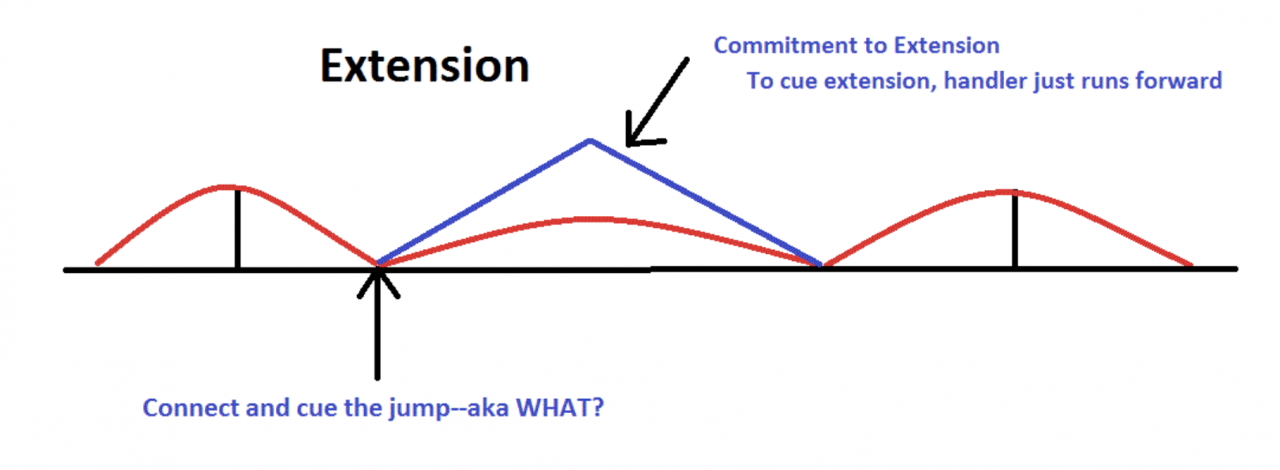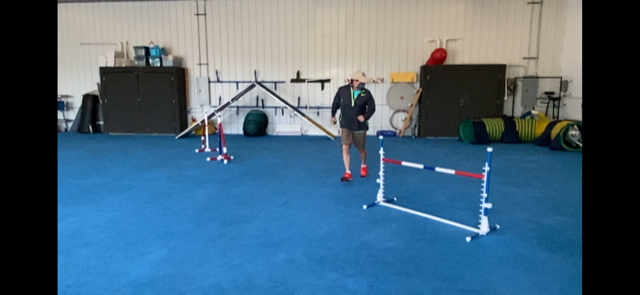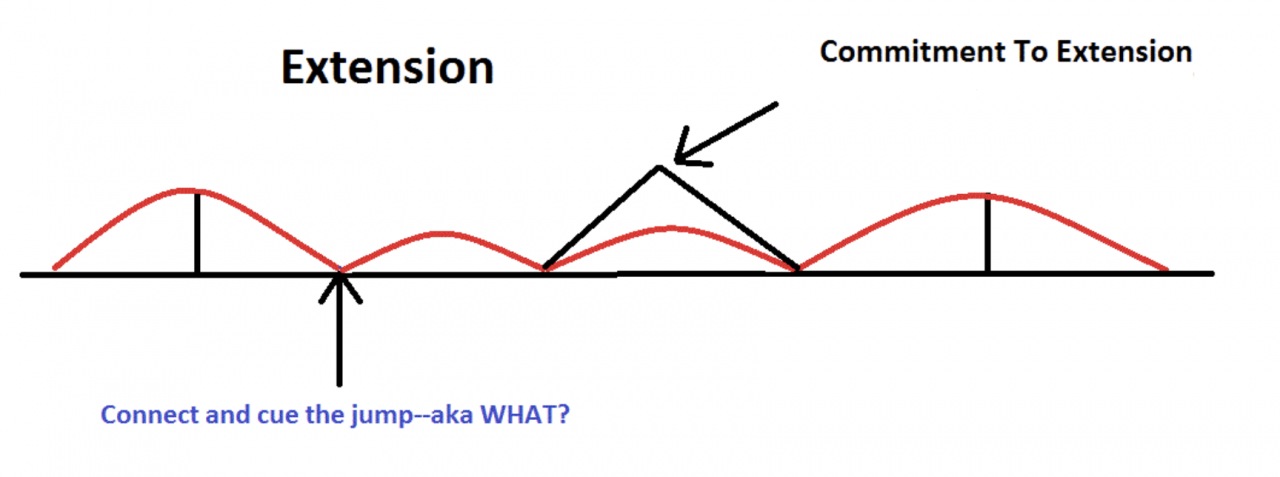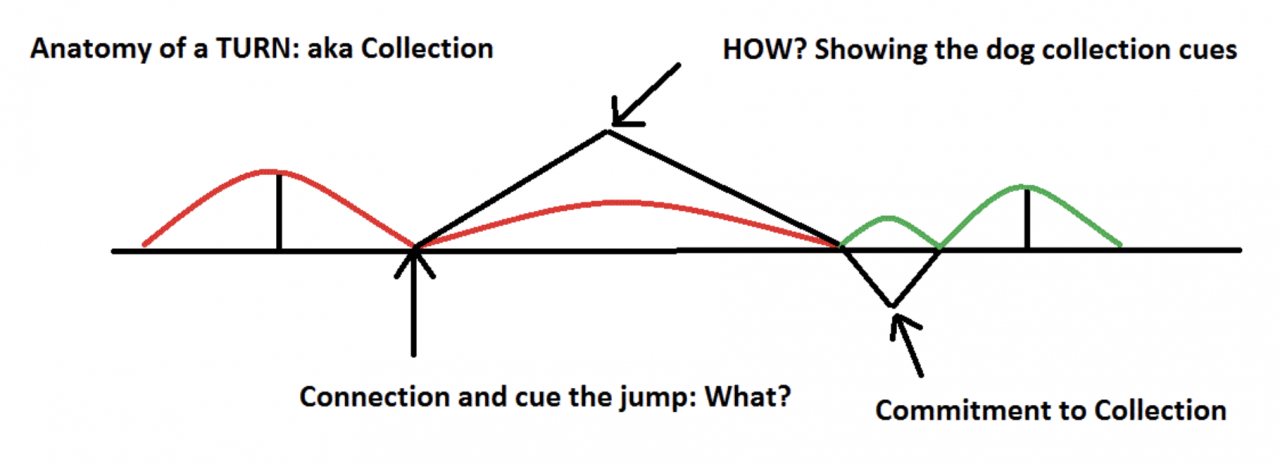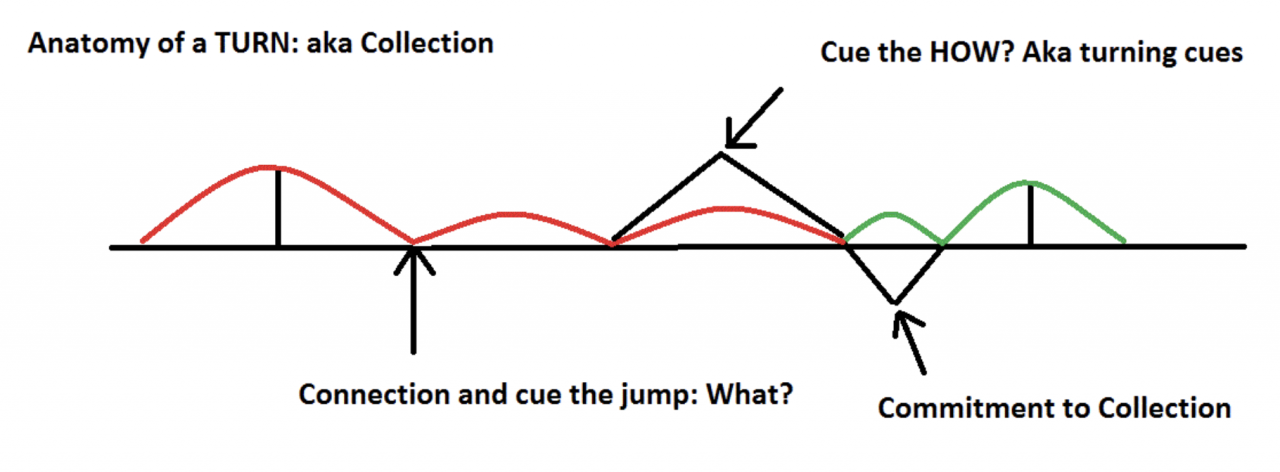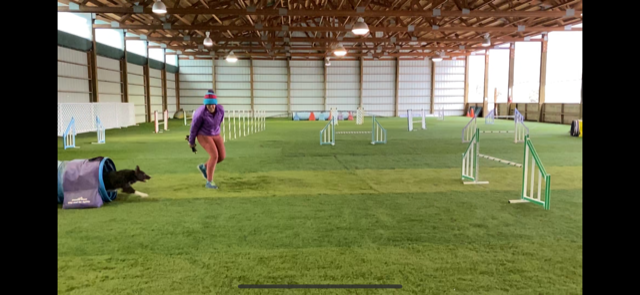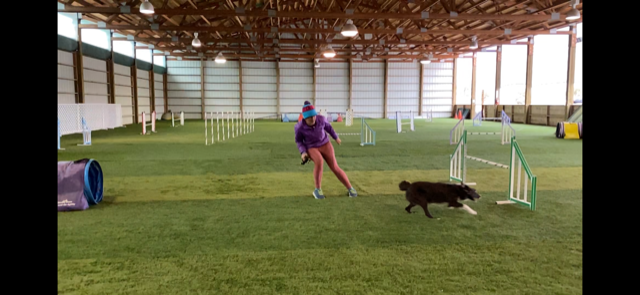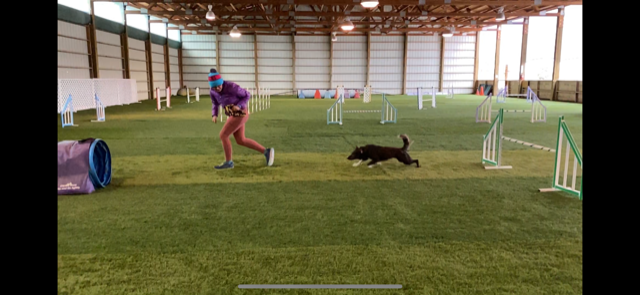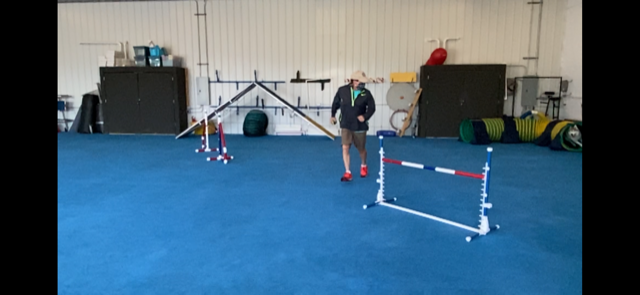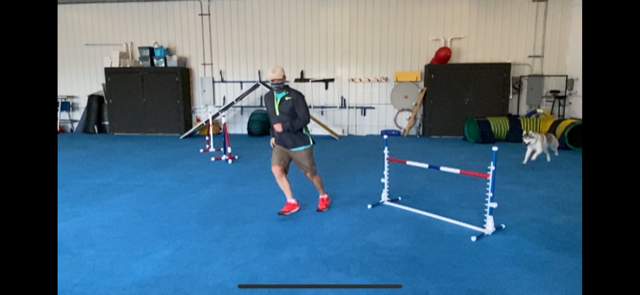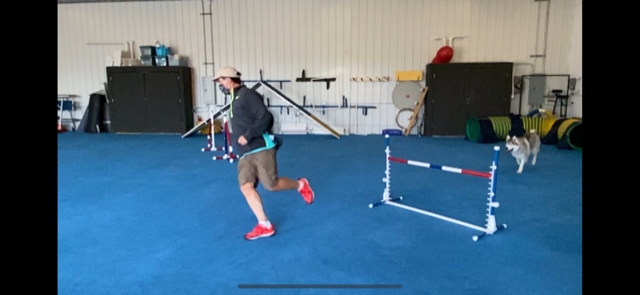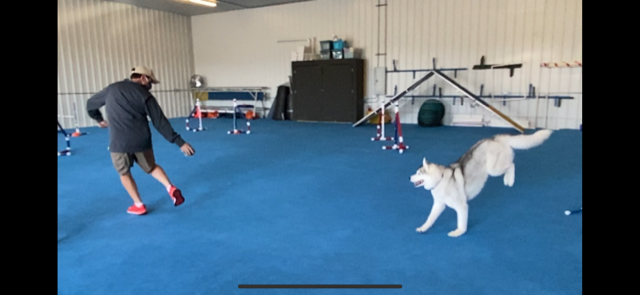Cuing Turns in Agility
When you go to agility classes, or seminars, you will always hear people talking about TIMING. This is a word that comes up in all levels of agility. From novice through World Team competitions. The ELUSIVE TIMING.
I have found that telling a student they are LATE can help them, but I like to pinpoint exactly what is late.
Which is why I drew up with the following diagrams to describe the cues for Extension and Collection.
Let's start with EXTENSION. Extension is the dog not having to make a turn. This can be different for big versus little dogs, so I have included both in diagrams.
Below is a diagram of typical extension for a BIG DOG. Imagine you are looking at two jumps from the side (so the vertical black lines are the two jumps).
The RED LINE is the dog's stride.
- The dog takes jump 1 (first jump on the left) and then lands off 1.
- Takes one stride between 1 and 2 (the jump on the right).
- Then takes off for jump 2, which is the 3rd red line.
The first arrow you will see is the moment that you should CONNECT:
- When the dog's feet HIT the ground off of jump 1, you then cue the WHAT (aka the next jump).
- Which for extension includes: running forward, saying the obstacle name, indirect eye contact (peripheral vision).
- This tells the dog HOW to take the jump, aka in extension.
The 2nd arrow is pointing to the BLUE line---this shows you the dog's stride after landing off of 1.
- Once you have cued the 2nd jump, you are now in the dogs "Commitment to Extension" aka they are committed to jump 2 and they are going to jump big and flat.
- You are only handling to the "Commitment for Extension" you are then done handling the jump.
If you compare the big dog diagram, with the one above, you will see the differences for the smaller dog.
- First arrow is still that connection point as the dog's feet land off the first jump. Then you will cue the 2nd jump, aka the WHAT.
- With a smaller dog, you will have 2-3 strides sometimes more. (I am just showing two here).
The 2nd arrow is showing the stride before take-off. That is the dogs "Commitment to Extension".
- The dog is committed to the jump, and will take the jump in an extended state, so big and flat jumping.
- Again you are only handling until the "Commitment to Extension", then you move onto the next obstacle.
MOST of us are pretty good at this, just run forward and point at things :) It is when we look at TURNS that things get a bit tricky.
Cuing Turns (AKA Collection)
Collection with a BIG dog:
The RED LINE is the dog's stride over jump 1, and then that middle stride.
- The dog takes jump 1 (first jump on the left) and then lands off 1.
- Takes one stride between 1 and 2 (the jump on the right).
- The first arrow is the same, that moment that you should see those feet hit the ground, and you will cue the jump. Aka the WHAT?
The GREEN LINE is the dog's collection stride, so in order to collect (aka turn) the dog must add a stride in, and THEN take off for the jump.
- In order to cue this, YOU MUST show collection during the MIDDLE STRIDE...IF you do not, the dog will just extend as shown in the above diagrams.
- Decel commands include: slowing down, a send, turning into the dog (aka like a Front cross), calling the dog's name, and direct eye contact. This tells the dog HOW to take the jump, in this case with collection so they can turn.
IF you get the cues for collection out DURING THAT MIDDLE STRIDE, you will then cue a turn.
- As the dog is reaching the area I have labeled the "Commitment to Collection" the dog knows to take the jump, and YOU ARE DONE. You can move through your front cross, rear cross, or other handling, and to the next obstacle.
Let's compare that to the small dog diagram:
The RED LINE is the dog's stride over jump 1, and then that middle stride.
- The dog takes jump 1 (first jump on the left) and then lands off 1.
- Takes 2-3 strides between 1 and 2 (the jump on the right).
- The first arrow is the same, that moment that you should see those feet hit the groun, and you will cue the jump. Aka the WHAT?
The GREEN LINE is the dog's collection stride, so in order to collect (aka turn) the dog must add a stride in, and THEN take off for the jump.
- In order to do this, YOU MUST show collection during the second STRIDE...IF you do not, the dog will just extend as shown in the above diagrams.
- Decel commands include: slowing down, a send, turning into the dog (aka like a Front cross), calling the dog's name, and direct eye contact. This tells the dog HOW to take the jump, in this case with collection so they can turn.
IF you get the cues for collection out DURING THAT SECOND STRIDE, you will then cue a turn.
- As the dog is reaching the area I have labeled the "Commitment to Collection" the dog knows to take the jump, and YOU ARE DONE. You can move through your front cross, rear cross, or other handling, and to the next obstacle.
So... you cue the WHAT (aka the jump), then the HOW (aka extension or collection) then you GO (aka leave the jump and move onto the next obstacle while still staying connected).
Here is a quick example of cuing a turn as demonstrated by Meagan and her Border Collie Wookie using a tunnel and a jump:
As you can see, when Wookie exits the tunnel, Meagan is connected to her and is starting the cue to the jump.
As Wookie is showing commitment to the backside of the jump, Meagan is starting to show her rotation and motion away from the jump.
Wookie takes the jump without Meagan helping at all, and as Wookie lands off the jump, Meagan is fully connected to her and is already showing her the line to the tunnel.
Here is another example of a less severe turn demonstrated by Mark and Ollie:
Again from the top of the post, Mark connecting with Ollie as he exits the tunnel. He is also cuing the jump with his motion.
As Ollie is fully committed to the jump (he is currently only 1/3 of the way to the jump) Mark begins his blind cross.
Here is Mark all the way through his blind and moving off the path, see where Ollie is? Still way back there!
As Ollie lands off the jump, Mark is completely off Ollie's path, and he is looking back to reconnect with his dog.
Problem Solving: What happens when...
Example. If, you cue the HOW, but not the WHAT, the result is??
- A refusal, the dog only sees you cuing them to turn into you, they never saw the 2nd jump.
If you cue the WHAT, but not the HOW, the result is??
- Extension, the dog will just run forward as there are not any turning cues from you.
If you cue the WHAT, and the HOW, but you do not GO, the result is??
- You stay behind, you get behind, and you are on the dog's path.
I hope this explains extension and collection (a turn) in a more detailed manner. This is why I do not just say someone is late. There are many ways to be late, you can be late giving the cue to the next obstacle (the WHAT) you can be late cuing extension or collection (the HOW) or you can be late moving onto the next obstacle (GO). I like to pinpoint exactly what part of the information was missing for the dog.
This also should show you why commitment is SO IMPORTANT. If your dog doesn't commit to the obstacle early enough, and STAY committed, you cannot have good timing! It is impossible! Commitment GETS you better timing.
Always remember:
Running with Connection = Handling
Running without Connection = Racing
Standing with Connection = Gawking
Standing without Connection = You are probably lost and looking at the numbers.
By accepting you will be accessing a service provided by a third-party external to https://www.fenzidogsportsacademy.com/
